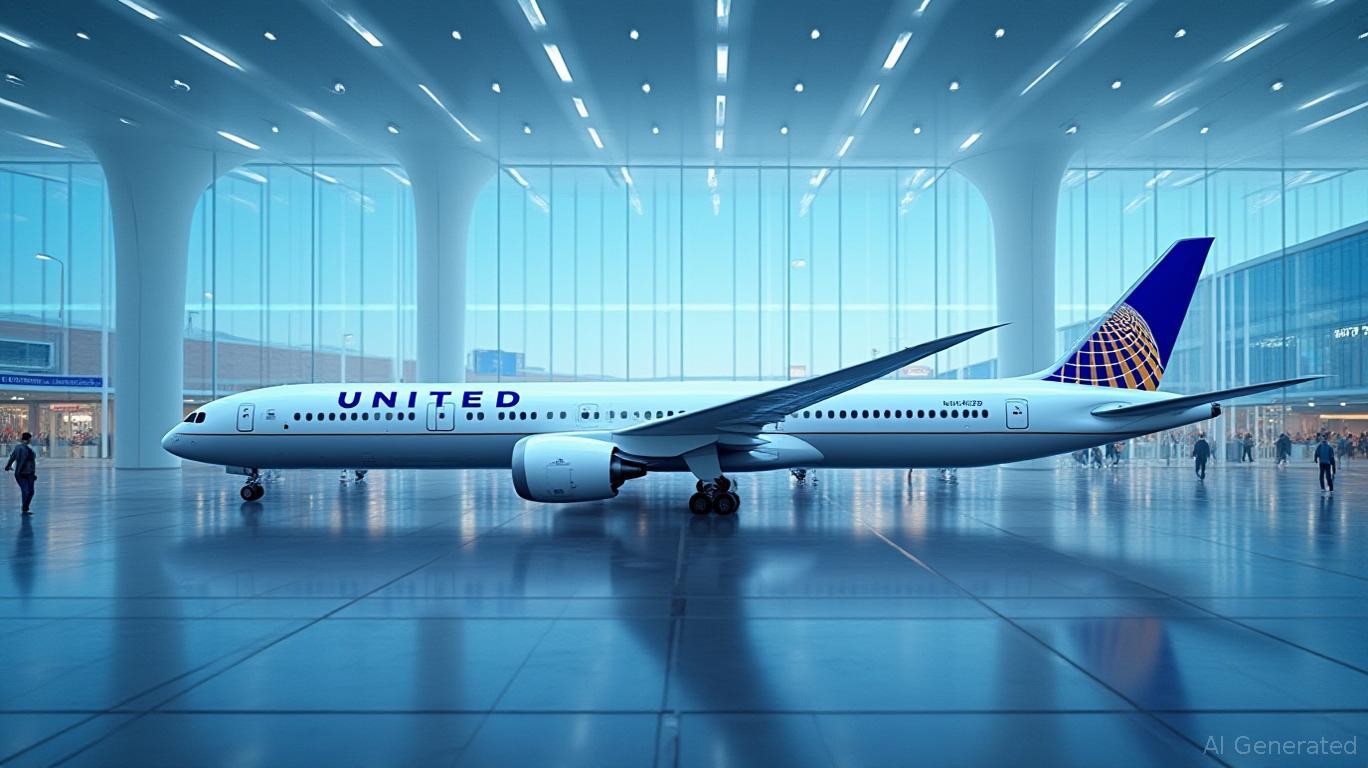United Airlines: Navigating Operational Headwinds to Unlock Long-Term Value
Amid ongoing operational disruptions at Newark Liberty International Airport and near-term earnings pressures, United Airlines (UAL) faces a critical balancing act between short-term challenges and long-term growth opportunities. Jefferies' recent price target upgrade to $100—amid lowered 2025 EPS forecasts—suggests the market is pricing in strategic resilience. This article examines whether UAL's stock presents a compelling buy at current levels, weighing Jefferies' bullish outlook against operational realities and macro trends.

Jefferies' Bullish Case: A Vote of Confidence in UAL's Long Game
Jefferies' June 2024 decision to raise UAL's price target to $100 from $80, despite trimming its 2025 EPS estimate to $10 (from the company's original $11.50–$13.50 range), underscores a belief in UAL's ability to navigate near-term turbulence. The firm highlighted two critical factors:
1. Strategic Leverage in High-Growth Markets: UAL's focus on international routes—particularly Japan and southern Europe—positions it to capitalize on post-pandemic travel rebound. The airline's partnership with JetBlue via the “Blue Sky” collaboration, which includes slot swaps at Newark and JFK airports, enhances operational flexibility and network efficiency.
2. Financial Resilience: UAL's “GREAT” financial health rating on InvestingPro, with a P/E ratio of 7, signals strong relative value compared to peers. Institutional ownership (69.69%) and recent volume trends suggest investor confidence, even as short-term earnings stumble.
Near-Term Risks: Newark's Shadow and Yield Trade-offs
The airline's Q3 2024 EPS estimate of $2.55—10% below consensus—stems from two key headwinds:
1. Newark Operational Struggles: Accounting for 20% of UAL's available seat miles, Newark's delays and capacity constraints continue to weigh on margins. The airport's chronic inefficiencies could persist until UAL's planned JFK expansion (2027) shifts traffic to a more stable hub.
2. Yield-to-Load Factor Shift: UAL's decision to prioritize load factors over yields during peak summer travel—a common industry tactic to fill seats—has compressed revenue per seat. While this boosts volume, it risks margin contraction in a demand-sensitive environment.
Demand Resilience: The Long Game
Despite these challenges,
and peers see reasons for optimism:- JetBlue Partnership: The “Blue Sky” deal's slot swaps at JFK and Newark could reduce UAL's exposure to Newark's volatility while unlocking access to high-demand markets.
- Spotify Integration: Free in-flight entertainment via Spotify (expanding to 680+ aircraft) enhances customer experience, potentially driving ancillary revenue and loyalty.
- International Momentum: UAL's Asia-Pacific routes, including Japan, are expected to outperform domestic U.S. travel, which faces slowing revenue growth.
Valuation: Is UAL Undervalued Now?
At a June 2025 closing price of $74.30—well below Jefferies' $100 target—UAL's stock appears attractively priced. Key metrics:
- P/E Multiple: At 7x,
- Institutional Sentiment: Despite lowered EPS guidance, institutional investors have maintained holdings, suggesting a long-term view.
- Upside Catalysts: A resolution to Newark's issues, stronger international demand, or a rebound in yield management could all push UAL toward its $100 target.
Investment Thesis: Buy the Dip, but Mind the Risks
UAL's stock presents a compelling contrarian opportunity for investors willing to look beyond 2024's operational hurdles. The Jefferies upgrade and strategic moves like Blue Sky and Spotify integration suggest UAL is positioning itself for sustainable growth. However, risks remain:
- Newark's Lingering Impact: Until JFK expansion begins in 2027, delays could continue to dent margins.
- Economic Sensitivity: A U.S. recession or further yield compression could pressure earnings.
Conclusion: A Buy for Patient Investors
UAL's valuation gap relative to its $100 target, coupled with its international growth thesis and strategic partnerships, makes it a strategic buy for long-term investors. While near-term earnings may disappoint, Jefferies' optimism—and the stock's current discount to peers—suggests a favorable risk-reward profile. For those with a 3–5-year horizon, UAL could deliver outsized returns if operational issues stabilize and demand recovers as expected.
Final Call: Buy UAL for its undervalued upside, but keep a close watch on Newark's progress and Q3 close-in bookings.

Comments
No comments yet